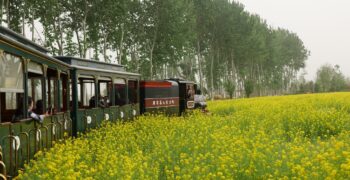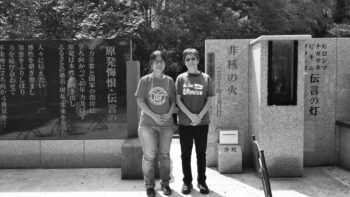July 1, 2025
Sit Tsui and Lau Kin Chi elucidate the history of China's People's Communes as told through the lens of three present-day rural villages. In these villages, they observe the effects of the project's dismantling and diminishing collective ownership and land management, with the conclusion that a return to collectivism is vital for carrying forward the socialist project.
February 1, 2025
In this deeply stirring account, Sit Tsui and Lau Kin Chi share their field research, conducted over years of travel and relationship-building, into the Japanese antinuclear movement. As the people and environment of Fukushima continue to be impacted by the disaster at the Fukushima Daiichi power plant in March 2011, the No-Nukes movement has grown in response, encompassing aspects of society ranging from artists and monks to fisherfolk and intellectuals.
July 1, 2022
Over the last twenty years, China has gained recognition for its efforts to reduce pollution and remediate the effects of industrialization within its borders. To mitigate the adverse effects of this reality, communities are returning to grassroots projects that present an alternative to unchecked globalization.
July 1, 2021
Confronting the triple trap of the COVID-19 pandemic, economic downturn, and ecological crisis, the Chinese leadership has reiterated that "China puts the people's interests first—nothing is more precious than people's lives." This kind of people-centered governance philosophy is ostensibly meant to protect the lives and health of the people, while defending people's property under the basic system of collective ownership.
October 1, 2020
During the 1960s, China was effectively excluded from the two major camps: the Soviet camp and the U.S. camp. For about a decade, China was obliged to seek development within its own borders and thereby achieved some extent of delinking: a refusal to succumb to U.S.-eurocentric globalization and an embrace of a people's agenda of development. While foreign relations were later normalized and China once again brought in foreign capital, since being explicitly targeted as the primary rival of the United States, however, the situation may again warrant moves toward delinking and searching for alternatives, with ups and downs along the way.
October 1, 2020
Zhoujiazhuang and the Puhan Rural Community offer contrasting experiences of how communities in different parts of China have responded to, negotiated, and undergone extensive changes during the last forty years since the reform policy was implemented in the country in 1979.
October 1, 2020
Originally set up in 1998 in China, the Puhan Rural Community was the first peasant-initiated, cross-village organization established after the collapse of the top-down people's communes and the implementation of the household responsibility system. Puhan learned a lesson about the exploitation of usurious microfinance and decided that it was capable of establishing a system of mutual aid credit by itself, changing the cultural emphasis on money. Its story of struggling with rural financial organizations opens up a debate on the trap of marketization and monetization, the root causes of loans and debts, the negotiating power of collectives, the production mode of ecological agriculture, and the redefinition of the commonwealth.
November 1, 2018
There is considerable interest in the history and characterization of China's economy. This overview of the evolution of the renminbi from the late Qing dynasty to the present, shows how China's political and economic changes in the twentieth and twenty-first centuries are reflected in the development of its highly contested modern currency system.
September 1, 2018
Throughout China's nearly seventy-year history of industrialization and financialization, whenever the cost of an economic crisis could be transferred to the rural sector, capital-intensive urban industries have had a "soft landing" and existing institutional arrangements have been maintained—a pattern that continues today. We argue that Chinese peasants and rural communities have rescued the country from no fewer than ten such economic crises.
February 1, 2017
Since the 1980s, economic growth in the core capitalist countries has been driven by an enormous expansion of financial capital, accompanied by steady deindustrialization. In recent years, the monopoly power of this financial capital has displayed increasingly tyrannical characteristics: it depends for its continued growth on ever-increasing indebtedness and dependence in developing nations, widening the divide between rich and poor and ultimately fostering state violence that serves to suppress popular resistance.… [Today,] military and monetary strength work together to profit from inequality and instability in emerging economies.









